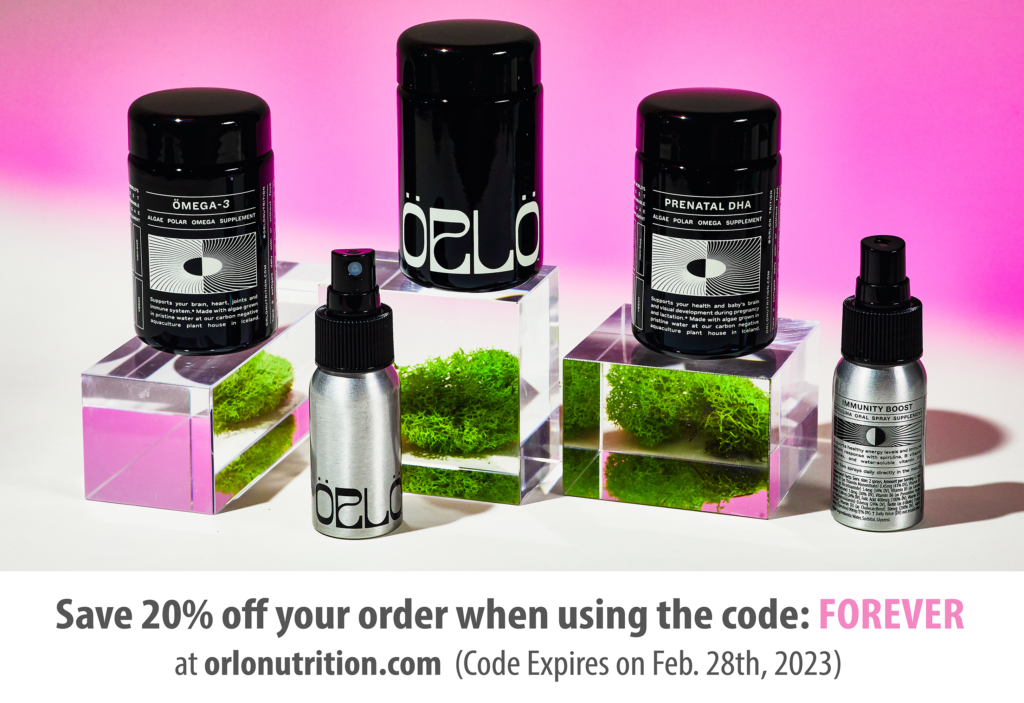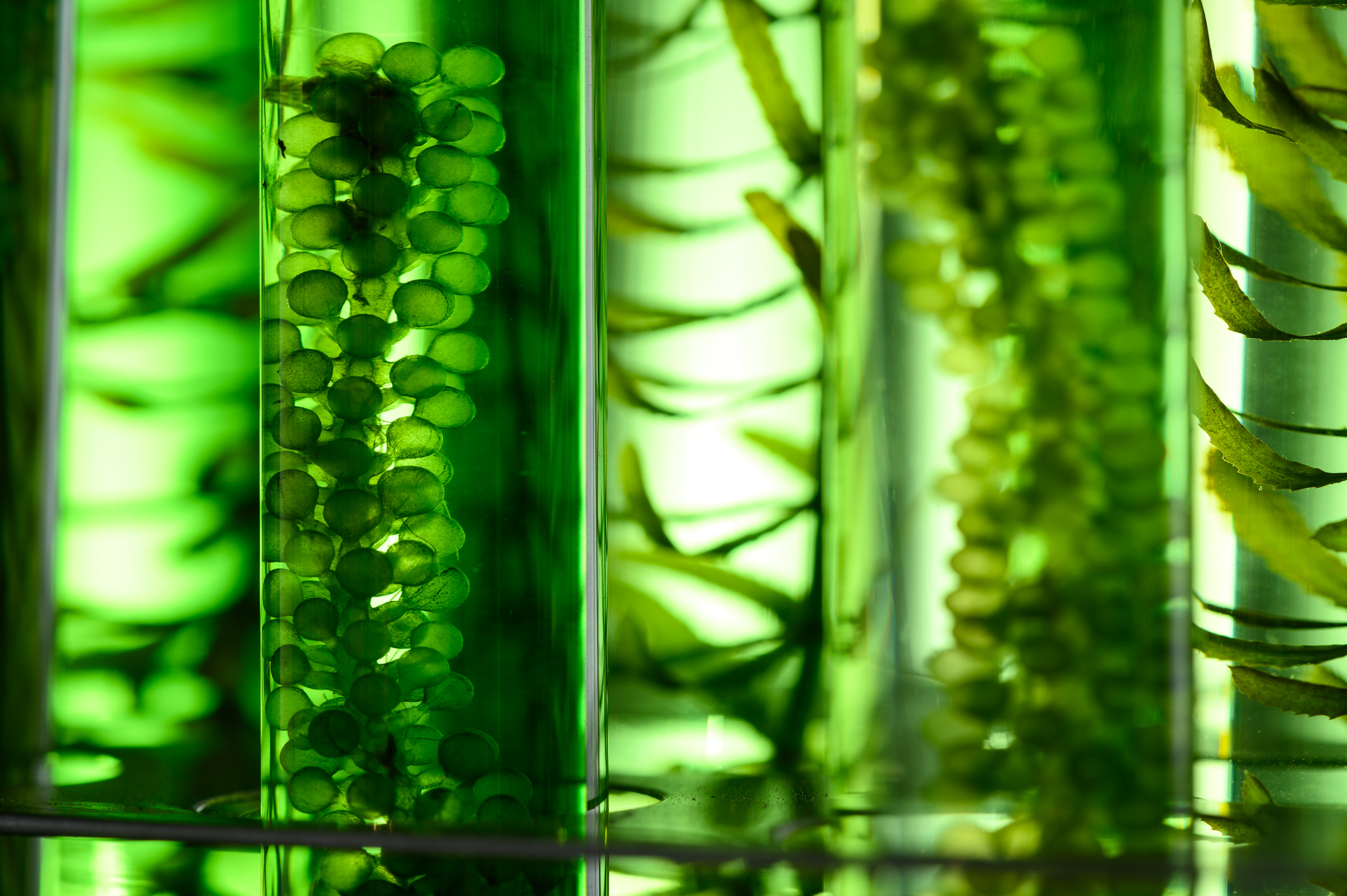Many of us know it’s heart health month, and that we should be doing a few simple things – like exercising regularly, and eating whole nutrient-dense foods to safeguard our cardiovascular system. But how often do we forget that a heart-healthy diet is rich in the omega-3s EPA and DHA? Do you eat SMASH fish (Sardines, Mackerel, Anchovies, Salmon and Herring) the recommended 2-3 times per week? In this article we provide a run-down of why and how you can get enough bioactive EPA and DHA every day, whether you’re a vegan, flexitarian, pescatarian, omnivore or carnivore.
What are EPA and DHA and how do they support heart health?
EPA, or eicosapentaenoic acid, and DHA, or docosahexaenoic acid, are the downstream metabolites of the more common plant-sourced omega-3 essential fatty acid – alpha linoleic acid (ALA). This means that EPA and DHA are the particular omega-3s your body needs to build healthy cells. By supplying a direct-source of these essential fats, your body doesn’t have to go through the expensive/inefficient process of using enzymes to break down the ALA and make it into EPA and DHA.
EPA and DHA stimulate resolvins which help to resolve inflammation and protectins which protect your DNA from damage. While research has focused on EPA for its cardioprotective abilities, and DHA for brain and nervous system health, both of these fats work together synergistically in the body. Synergistic in this context means that the sum of their actions is greater than either one on its own.
Recommendation after recommendation comes rushing in from dieticians, clinicians and doctors – telling us one resounding message: We need to manage inflammation – through a healthy, whole-foods diet, by moving our bodies and by managing our stress levels. But even the healthiest routine often isn’t enough when it comes to omega-3s.
How do I give my body the best chance at absorbing the essential omega-3s EPA and DHA?
With these particular fats, unless you are consuming SMASH fish 2-3 times a week, supplementing is best, because we can augment our systems with exactly what our bodies need to maintain optimal function. EPA and DHA are available in a variety of delivery systems and forms. You can find anything from a liquid concentration to a gummy or even a fortified food. The most popular source for these health-promoting fats is fish oil, but did you know that fish get their EPA and DHA from the algae they consume?
Fish oils naturally contain omega-3s in the triglyceride form, but since fish also swim in our polluted oceans, their oil has to be purified. The process of purification and concentration results in oils in their ethyl ester form. Ethyl esters do not naturally occur in nature, nor in the human diet. They are not as effectively absorbed by the body. While ultra-high potencies of omega-3s are available in the ethyl ester form, they may not be the right choice for you. Unless a fish oil product says it’s in the triglyceride form, it’s probably in the unnatural ethyl ester form – even if it’s buried in a gummy-style vitamin.
Ethyl esters and triglyceride oils alike cause aldehyde byproducts (burps) which can be unpleasant, and fishy. Most algae oils are also in the triglyceride form, creating that same gaseous effect. People are often surprised to learn that even those algae oils can have a fishy taste or smell. This is because omega-3s in the ethyl ester or triglyceride form are still somewhat fragile and oxidize easily – and oxidized omega-3s smell and taste – you guessed it – fishy. It doesn’t mean you won’t absorb the omegas, but the omegas you’re taking might already be rancid, and rancid fats can cause inflammation.
So, what form of EPA and DHA should we be looking for? We’ve known for some time that omega-3s in their polar lipid form are more quickly utilized by the body, because they are both more stable (less prone to oxidation) and they are in the same form your cells use. [CB1] Polar lipids are what comprises the membranes of every cell in your body. This is the form that your tissues need. The polar lipids in krill oil (phospholipids) are what make krill oil more bioactive than fish oil, but concentrating enough omega-3 from these little critters, takes a lot of work – plus krill are also criticized as an unsustainable source. Most krill manufacturers blend their products with fish oil anyway, so it’s not all that different from a standard omega-3 from fish these days.
Did you know that we can also get polar lipids from the original omega-3 source? Algae!
Because algae are low on the food chain, they don’t have the same risk of bioaccumulating toxins the way fish and krill do. This means that with the right growing conditions and the right technology, we can extract the polar lipid form of omega-3s from algae! That is exactly what VAXA Technologies set out to do with their aquaculture planthouse in Iceland. They grow algae in a closed system with only pure water, green geothermal energy, optimized nutrients and the perfect blend of light so their microalgae can thrive. Their AI optimized growing conditions enables them to produce nutrition solutions using 99% less land and water resources of other sources while supplying nutrients in their most bioavailable form. Their first commercially available omega-3s are now on the market, with their brand, ÖRLÖ NUTRITION. Örlö’s Omega-3 and DHA products boast up to 3x faster absorption than fish oil, so you can get all the benefit of EPA and DHA without the fishy burp.
If we know that polar lipids are best absorbed, why don’t fish oil manufacturers make polar lipid products?
Fish bioaccumulate toxins from their environments. The moment you try to purify the polar lipids from fish tissues, the polar bond breaks and you’re again left with omegas in the less absorbable triglyceride or ethyl ester form.
Can’t I get enough omega-3 from a plant-based diet?
A well-functioning body would require roughly 16X more ALA than EPA and DHA to give your body the essential nutrition it needs to thrive. That would mean consuming more flax oil, chia seeds, and walnuts (and a lot more calories) than your body wants or needs. And there’s another problem with consuming only terrestrial plant-sourced omega-3s (e.g. flax, chia, walnuts). These plants do not only contain omega-3s. They contain a spectrum of essential and non-essential fatty acids. These components can compete with the omega-3s for those same enzymes to break down, rendering your body’s ability to build EPA and DHA from ALA somewhat hampered.
Furthermore, even the mindful vegetarian or vegan consumes far more omega-6s than omega-3s, pulling our consumption out of balance.
Call out: While the ideal omega-6:omega-3 ratio is between 3:1 and 1:1, most Americans consume 20x more omega-6 than omega-3. Recent studies have even shown 75% of vegans are deficient in omega-3.
Common culprits that can throw your omega-6:omega-3 ratio out of balance are packaged foods, fried foods, baked goods, salad dressings, and animal products.
How much omega-3 do I need to keep my heart healthy?
International recommendations for healthy individuals range from 250 mg to 500 mg of EPA and DHA combined. Some doctors recommend as much as 1 gram (1000 mg) per day. Understand though that these recommendations are based on fish oils in the triglyceride or ethyl ester form. Taking an omega-3 in its polar lipid form means that you don’t require as much – so you can take a smaller soft gel with 250 mg – 350 mg of EPA + DHA per serving and get the equivalent of 750 mg – 1050 mg of EPA and DHA from a triglyceride or ethyl ester form omega-3 oil.
Key Takeaways:
- Omega-3s EPA + DHA are cardioprotective and help regulate inflammation
- Ethyl ester omega-3s are unnatural and not typically in the human diet
- You can get EPA and DHA from the original source – ALGAE
- Polar lipid form omega-3s are up to 3x more bioavailable than fish oil
- Örlö Nutrition’s algae-based omega-3 products provide EPA + DHA in the best absorbed polar lipid form
- Supplementing 250 – 350 mg of the omega-3s EPA + DHA in the polar lipid form each day safeguards your cardiovascular health


